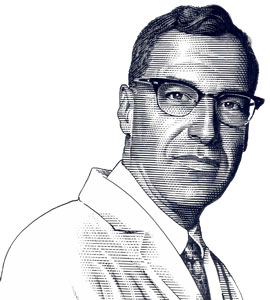You are here
Wharton’s jelly to augment cleft palate repair
 Cleft lip and palate are among the most common congenital birth defects (CDC). Between the fourth and ninth weeks of pregnancy, tissues from each side of the head grow toward the center and join together to make the face. A baby can be born with a cleft lip or palate if the tissues that compose the upper lip or the roof of the mouth have not joined completely during pregnancy.
Cleft lip and palate are among the most common congenital birth defects (CDC). Between the fourth and ninth weeks of pregnancy, tissues from each side of the head grow toward the center and join together to make the face. A baby can be born with a cleft lip or palate if the tissues that compose the upper lip or the roof of the mouth have not joined completely during pregnancy.
Nowadays, the majority of infants with cleft lip and palate are diagnosed during routine ultrasound exams around 24 weeks of gestation. This enables their parents and doctors to prepare for the repair of the cleft after birth. If the repair will use Wharton’s jelly from the umbilical cord to augment surgery, the parents know in advance that they need to arrange for its collection and storage.
There are numerous surgical approaches to the repair of a cleft defect, depending upon the type of cleft and other health problems. If the cleft extends into the alveolar ridge that provides structural support for the mid-face and holds the sockets of teeth, then it is necessary to fill the cleft with a bone graft. Traditionally, surgeons have repaired alveolar cleft palates with a bone graft from the iliac crest of the pelvis. This approach subjects the child to an additional surgical procedure with associated discomfort and risks.
Our group at the University of Texas has developed an approach that uses the supportive tissue of the umbilical cord as a bone graft to augment the repair of alveolar cleft palates. The umbilical cord is a fibrous structure filled with gelatinous tissue that contains mesenchymal stem/stromal cells that support bone ingrowth and can develop into bone cells called osteoblasts. This supporting tissue of the umbilical cord is called Wharton’s jelly. Even when minced, the collagen fibers in the cord tissue give it structural characteristics that enable it to pack the gap that must be bridged in alveolar cleft palate repair. This is a distinct advantage over harvesting the child’s bone marrow, which is a liquid that cannot bridge the gap without a scaffold.
As opposed to processing techniques that isolate the stem cells within the umbilical cord via enzymatic digestion of the collagen matrix, we specifically try to preserve the structure of the collagen matrix that is rich in glycosaminoglycan and hyaluronic acid. We have developed unique devices that selectively remove the umbilical blood vessels and the amnion lining so that the Wharton's jelly is isolated. Our goal is to isolate a tissue product that contains only mesenchymal stem/stromal cells and not epithelial stem cells that are found in the lining of the blood vessels or the outer lining of the umbilical cord.
The isolated Wharton's jelly is then vitrified using a specific cryopreservation solution and a specific approach to cooling. This results in 70% cell viability upon re-animation, and the matrix retains the original structural characteristics that make it an outstanding graft for tissue repair.
A typical surgery for alveolar cleft palate repair only requires 15-20 gm or 20cc of Wharton's jelly, which can be obtained from a single umbilical cord. We have performed multiple pre-clinical studies that demonstrate that this approach improves healing of cleft palate defects in animals. These are being repeated in larger animals as required by the FDA prior to translating this approach to treat children with cleft lip and palate. Once these final components are completed, we anticipate that clinical trials should begin within the next 12-18 months.


